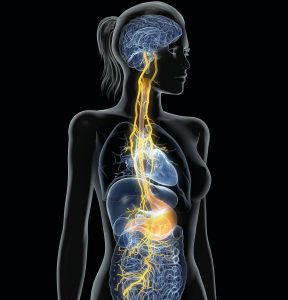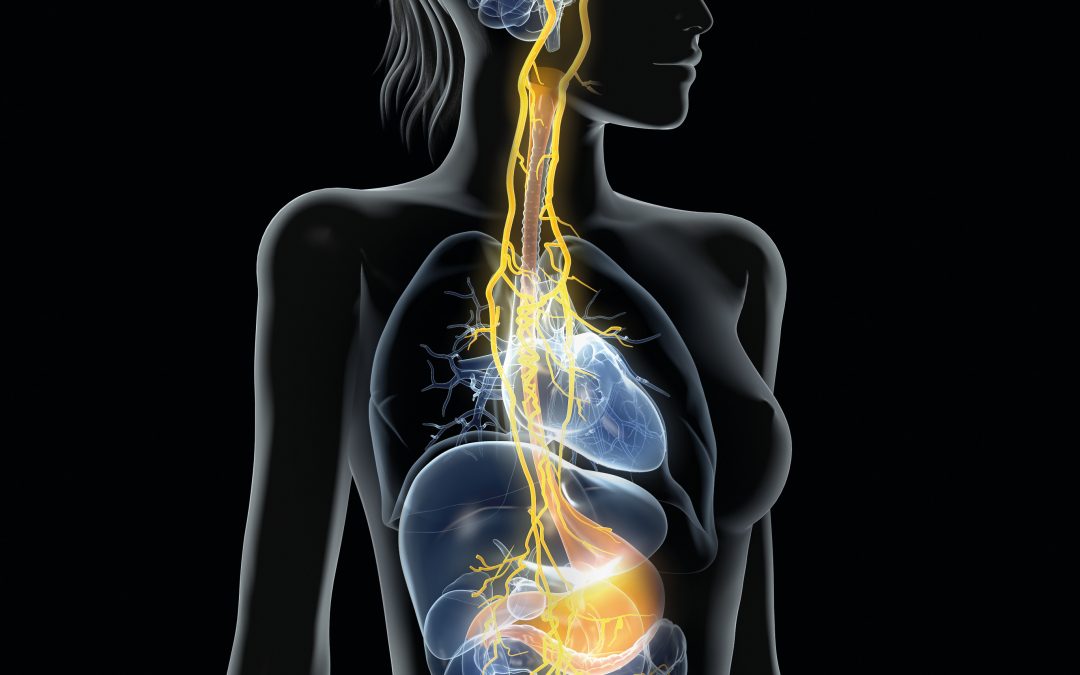Dealing with intense emotions leaves our central nervous system on high alert leaving our vagus nerve weak and unbalanced. What is the connection between our vagus nerve and our central nervous system?
Life has brought more than the typical challenges over the last few months, for all of us. And while our stories are very different, the emotions can be very similar. Fear, uncertainty, exhaustion, and even though many of us have been invited to slow down, our nervous systems have other plans. It is important to really feel them, acknowledge them, unpack them, and look them in the eye.
“We cannot selectively numb emotions, when we numb the painful emotions, we also numb the positive emotions.”― Brené Brown, The Gifts of Imperfection
I have a history of adrenal fatigue and exhaustion, so I have to be hyper-aware of my endocrine health and use all of the tools at my disposal to stay on top of any challenges that come up, and that includes not ignoring anything.
I have spoken a great deal about the branches of our nervous system on social media, those being the sympathetic nervous system (SNS) and our parasympathetic nervous system (PNS).
The SNS, which can help to keep us out of danger, is very important. This is the fight-flight-freeze mechanism of our nervous system. Most of us are stuck in freeze mode as of late, which means our cortisol is always high, and as a result we have a deep level of heaviness and exhaustion. This is termed our allostatic load or in most of our cases overload, which is the wear and tear on our body and mind when under chronic stress.
When we are stuck in freeze mode, it becomes harder and harder for our nervous system to switch over to the parasympathetic system of rest and restore, and this is not a good thing.
A piece of this that is not often talked about is our vagus nerve. The vagus nerve is the 10th cranial nerve with impressive length and function, running from the brain all the way down to the abdomen.
Brain…check
Pharynx…check
Lungs…check
Heart…check
Esophagus…check
Stomach…check
Gallbladder…check
Pancreas…check
Small intestine…check
YES…..the vagus nerve acts on all of these. And when we are dealing with anxiety and depression, strengthening or toning the vagus nerve is a great place to start to begin to heal.

What does that mean you ask?
Toning the vagus nerve is essentially balancing the SNS and PNS. All along the vagus nerve you will find enteric nerve fibers, or our enteric brain. This is really fascinating stuff, the connection from the brain to the gut is essentially working like a 2-way radio. When working well, toned and strong, the communication going both ways is strong and clear. When it isn’t, the radio goes on the fritz.
This is a rudimentary analogy but an accurate one.
Stimulating the vagus nerve is something we should all be doing. A recent study published in 2018 by the Frontiers in Psychology states that there is preliminary evidence that vagus nerve stimulation is a promising add-on treatment for treatment-refractory depression, posttraumatic stress disorder, and inflammatory bowel disease. Treatments that target the vagus nerve increase the vagal tone(1).
You can Google various ways to tone the vagus nerve, but my favorite by far is deep breathing while creating a vibration in the throat (crossing the vagus nerve in the pharynx) through sound therapy.
This works for two reasons. When under high levels of stress and anxiety, we tend to shut down energetically, we stop moving, hunker down and curl up, slump our shoulders forward closing off our heart, and in the process, our SNS is lit up like a light bulb.
When we perform deep breathing and chanting, we are forced to shift over to our PNS system while we are stimulating the vagus nerve.
Singing, humming, chanting, and even gargling stimulates the nerve. Now we cannot gargle all day, but we can incorporate the others quite easily.
Most of take anywhere from 10-15 breaths in one minute. Try to consciously get the number down to 6 breathing deep into the diaphragm. Once you have mastered that, add a hum throughout the length of every exhale. Close your eyes and feel the vibration in your throat, face, and head.
This is just the beginning. I have found a way to incorporate a number of therapies for a powerful way to bring calm quickly, keep the PNS engaged while rewriting limiting beliefs.
My next online course, From Healing to Thriving, Reform your Inner Critic to Ignite your Inner Wisdom is a powerful 4 module course that targets this practice as well as many other engaging exercises to become the best you that you can be.
The launch is set for mid/end of June. If you are interested in being a beta tester (spaces are limited), reach out at Lifeholistically@gmail.com.
Like so many practices in life, I encourage you to become educated on the proper use of essential oils. When using them, please do so cautiously, understanding that there is often misinformation on the internet. You can be assured that I support only educated and proven resources. While essential oils should not be feared they should be respected and used properly to ensure the safety of the individuals using them.
Please note that I am not a medical practitioner. The content of this website is provided for general informational purposes only and is not intended as, nor should it be considered a substitute for, professional medical advice. Do not use the information on this website for diagnosing or treating any medical or health condition. If you have or suspect you have a medical problem, promptly contact your professional healthcare provider. By using this website, you assume full responsibility and liability for your own actions.
Reference
(1) https://www.ncbi.nlm.nih.gov/pmc/articles/PMC5859128/




